ArtMarket® Insight, la actualidad del mercado del arte
Índice ArtMarket® Insight
Louise Bourgeois – Art as redemption [08/11/2007]
Her oeuvre is celebrated in an exhibition at London’s Tate Modern until 20 January 2008, which continues at the Paris Pompidou Centre from 5 March to 2 June 2008, before moving to the United States.
Louise bourgeois is one of the senior figures of contemporary art. At 96 years old, she continues to produce her introspective and cathartic work, which explores human relationships, their suffering and frustrations.
Georges Seurat – drawings [06/11/2007]
Leading light of neo-impressionism and father of pointillism, George Seurat is being honoured by the MoMA (New York) until 7 January 2008 with an original exhibition entirely dedicated to his drawings. The exhibition strikingly reveals the technique Seurat used for producing black and white drawings on paper with an exceptional degree of luminosity. Indeed, it was one such drawing Portrait d’Aman-Jean that got the artist his first and only appearance at the Salon officiel in 1883. The following year, his painting entitled Une Baignade, Asnières was refused by the Salon!
Gustave Courbet – between realism and scandal [05/11/2007]
Born in Ornans in 1819, Courbet absorbed the painting trends of his era before liberating himself from the academism and the romanticism of his youth. Although his first works were characterised by sentimentalism, by 1848 his paintings had evolved towards a form of “austere” realism. Henceforward, the artist’s vision gained freedom as it moved away from idealisation towards nature in a broader sense.
The New York sales at new highs [28/10/2007]
On 6 and 7 November the two key sales of the auction season will take place in New York. Sotheby’s and Christie’s have assembled for the occasion a selection of important works by Paul Gauguin, Vincent Van Gogh, Claude Monet, Cézanne and even Franz Marc. To date, pre-sale estimates from the two auction houses have never been so high.
Jeff Koons – The promise of a foretold success [24/10/2007]
During the 1980s, Jeff Koons appropriated everyday consumer items such as vacuum cleaners, basket balls or various knickknacks. Unlike Duchamp who, with his ready mades, did not seek aesthetic delight in exhibiting mundane objects, Koons glorifies mass-made products in a Pop aesthetic. The American artist aimed to reach the widest possible audience in opting for popular culture…and the bet paid off. He is now not only one of the artists commanding the highest prices but also one of the most controversial!
CONCEPTUAL ART – The mind to the fore! [11/10/2007]
As Leonard de Vinci was already affirming, back in the XVth century, art is ‘Cosa mentale’, a thing of the mind. Five centuries after this premise, artists gave the concept precedence over the realisation of the work and the skill of the artist. The work became witness to an idea. Officially born in the 1960s, the conceptual trend is still around today, its tone neutral and the message clearly to the fore.
Surrealist photography – convulsive beauty [27/09/2007]
Surrealist photography was officially born in 1924 with the movement Manifesto by André Breton. The thirst for new experiences which inspired the surrealist oeuvre sustained the exploration of the photographic medium in various forms. Man Ray’s solarization involving exposing the negative to light, Raoul Ubac’s brûlages, Pierre Molinier’s photomontages or André Kertész’s mirror effects are all examples of techniques which de-realise subjects and objects, giving them an element of mystery…Surrealist beauty is irrational and coincidental, marvellous and convulsive.
Video art – the moving image [19/09/2007]
The artist, according to Wassily Kandinsky’s time-honored expression, is ‘the child of his time’. So what could be more normal than to appropriate contemporary technologies, in addition to the images and ideas of one’s era. The boom of television during the 1960s awakened artists, in the United States as in Europe, to the possibilities of a ‘video art’. For nearly fifty years, artists have been exploring the many qualities video has to offer in terms of manipulating the image, narrative power and the temporal dimension.
Free Figuration – Art without complex [13/09/2007]
Free Figuration is humour, spontaneity, an uncomplicated language of the people. The birth of the movement dates back to 1981, when Bernard Lamarche-Vadel showed the works of Rémy Blanchard, François Boisrond, Robert Combas and Hervé Di Rosa in his Paris apartment. What do these artists have in common? bright colours and a refreshing style, inspired by cartoons, advertising and daily life….universes accessible to everyone, well away from any artistic elitism.
Bad painting – In praise of “bad taste” [04/09/2007]
Bad Painting emerged in the United States at the end of the 1970s and flourished in the 1980s. The “Bad boys” of painting are Jean-Michel Basquiat, Neil Jenney, Kenny Scharf, Julian Schnabel, Malcolm Morley, David Salle, Jonathan Borofsky and Donald Sultan. They glory in the bad taste of their work, draw inspiration from fringe and popular culture, introduce various materials into their paintings, and play on excessively thick layers and clashing colours. This reversion to expressionism in painting staked out its territory in opposition to the period’s established codes of austere minimalism and conceptual art.
Shcontemporary : a new art fair is born in Shanghai [03/09/2007]
Shanghai and Beijing are the new centres of attraction: galeries are proliferating there and collectors from the world over are invited to discover in situ the dynamism of the Asian scene, encouraged by the effervescence of Chinese art, whose sale proceeds were multiplied by ten in 2006.
Animal sculpture [27/08/2007]
In the 19th century, art lovers fell for a new form of sculpture where the animal was king. Animal sculpture is still popular today with price levels up by 100% over the last 10 years.
Keith Haring- Using the streets as a laboratory [12/08/2007]
At the beginning of the 1980s, Keith Haring chose a direct and alternative mode of expression at the heart of the urban landscape. Between 1980 and 1985, he produced hundreds of drawings in the streets and subways of New York, working so frenetically that he sometimes turned out more than 40 drawings in a single day. Haring wanted to reach a wide public and so developed a synthetic, energetic, and rhythmic graphic style that feeds on pictograms, and is inspired by graffiti, cartoons and comic strips. The Haring “style” rapidly became one the most popular visual languages of the 20th century.
Jörg Immendorf [05/08/2007]
Jörg Immendorff started out in landscape painting, studying with Theo OTTO, before joining the Art Academy in Düsseldorf under Joseph BEUYS. He launched the LIDL movement in 1968, which was censored by the Ministry of Culture the following year. He was thrown out of the academy as a result of the controversy. This incident propelled Immendorf into the big league, and by the time he was featured in documenta 5 in 1972 he was already considered a major artist.
Old Masters [29/07/2007]
Old masters are the pride of the most prestigious museums and a few collectors who are loathe to part with their masterpieces. A shortage of works, and the tempting prestige of a famous signature, means some paintings, but also drawings, are fetching spectacular bids. However, art lovers can turn to signatures that are less famous with the general public or drawings and prints that are everywhere on the market.
Miquel Barceló – back to the matter [25/07/2007]
There is something timeless about Miquel BARCELO’s work. The Spanish artist explores fundamental themes: the passage of time and organic metamorphosis. He grinds up matter, plays with impastos, makes gashes in the pictorial surface to which he adds heterogeneous materials. Barceló was fascinated by André Breton, whose idea of ‘rencontre fortuite’ or ‘chance encounter’ (of objects and ideas) certainly inspired his incongruous combinations of paint and sand, ash and remains…
Helmut Newton- Scandal and sophistication [23/07/2007]
Helmut NEWTON’s first photographs, taken in the 1930s when he was an adolescent, already testify to his cult subjects: fashion, woman and the portrait. His first success came after the Second World War when he published his work in Playboy and various other magazines and set his style in the 1970s.Thanks to a skilful cocktail of eroticism and voyeurism, power and domination, seduction and proudly assumed “bad taste”, his photos attract some people, shock others but leave nobody indifferent.
Karel Appel – I paint the wildness of my times [16/07/2007]
Dutch artist Karel APPEL was a cofounder of the group known as Cobra (1948-1951), named after its member artists’ home cities of Copenhagen, Brussels and Amsterdam. As well as participating in Cobra, Appel continued to produce spontaneous and exuberant art until the end of the 1970s. His instinctive approach to painting is typically expressed as an explosion of colour and a child-like graphical sensibility. Appel juggles materials, plasters on layers of paint, and pulls together found objects that are integrated into his works. Rather than seeking to seduce the viewer he wants to give represent the wildness of his times.
Hermann Nitsch : the aesthetics of soiling [08/07/2007]
Hermann Nitsch is considered to be the leading light of Viennese Actionism (1962-1968), a protest movement which aimed to heal the wounds created during the Third Reich. They did this by breaking taboos through group rituals and private ceremonies steeped in blond and excrement. Remaining faithful to his first “happenings”, Nitsch continues his organic and impulsive rhetoric as he reaches his 70s. His paintings in oil, acrylic and blood evoke the sacrificial violence which featured in his Theatre of Orgies and Mysteries.
4023 new artists records in 6 months [04/07/2007]
The high-profile sales in New York during May and in London during June confirmed the overall market mood: over the last six months, the number of new price records at auctions is particularly high. Indeed these records are the icing on the cake of a market showing a 28% increase in the average price of art since the start of the year, and +133% over the last ten years. The Artprice Global Index is currently 16% above its 1990 level
Bruce Nauman [02/07/2007]
Bruce Nauman was born in Fort Wayne, Indiana, on December 6, 1941. He began by studying music and mathematics at the University of Wisconsin in 1960 before switching to the art department of the University of California, Davis, and graduating with an MFA in 1966. In 1968, Nauman was taken under the wing of gallery owner Leo Castelli and his career took off. By the age of 31 he had his first retrospective show, at Los Angeles County Museum.
‘Contemporary Art – evenings sales’ in London: £140 million [25/06/2007]
Having achieved a historic result in this sector on 16 May last in New York ($384,654,400), Christie’s opened the ball of the London contemporary art sales on 20 June with sale proceeds of £67,470,800 in 83 lots. The following day, Sotheby’s outstripped its competitor, selling 66 lots for a total of £72,427,600. In 2006, the total London proceeds of the two auction houses’ contemporary art evening sales amounted to close to £56 million.
Artprice and ADAGP sign an agreement strengthening the digital economy and copyright [24/06/2007]
Artprice, the world leader in art market information, and ADAGP, the rights management society with the widest representation in the field of the visual arts, have reached a very special agreement.<%/DESC%>ADAGP specialises in royalty and rights management. It was created in 1953 and represents 48,000 visual artists. Working through its network of sister societies, it collects and distributes its members’ royalties in more than 43 countries.
Return to strength for impressionism at the London auctions [20/06/2007]
Supported by an increasingly dynamic London market the ‘Impressionist & Modern Art Evening Sales’ organised by Sotheby’s and Christie’s at their New Bond Street and King Street offices are now as spectacular as in New York. In just 100 lots sold during the two evenings, the auctioneers raised no less than £201 million ($400 million), of which £121 million in the 18 June sale alone organised by Christie’s, a record total for a Fine Art sale in Europe.
Robert Mapplethorpe – Beauty and the devil are one and the same [18/06/2007]
The work of Robert Mapplethorpe (1946-1989) has something of a scandalous reputation, the photographer shocking puritanic Americans by putting sexuality at the heart of his artistic universe. He became a photographer in the 1970s, an era of sexual liberation soon to be brought to a halt by the rise of the AIDS epidemic. Mapplethorpe never ceased extolling the human body in meticulous compositions often evoking the cool and strict aesthetic of neoclassical painting.
Anselm Kiefer [10/06/2007]
Born in Germany six months before the end of the Second World War Anselm KIEFER began by studying law and romance languages in 1965 at Freiburg in Breisgau, before switching to follow the art courses taught by Peter DREHER and Horst ANTES. He held his first exhibition at the age of 24. In 1970, he went to study under Joseph BEUYS.
Chinese Contemporary Art Market – Cultural revelation [31/05/2007]
Speculation is showing no signs of slowing and auction sales are ever stronger, and prices ever higher. The price appreciation has been staggering for the generation of young Chinese artists and the number of investors continues to grow. It often takes only a few years for a Chinese artist to see a tenfold price increase, as with ZHANG Xiaogang or CAI Guoqiang to cite just a couple of examples. Symbolic of the price increases: the ten most successful auctions of contemporary Chinese art have been recorded over the past twelve months. In the end, in 2006, 31.3% of the Chinese contemporary artworks sold at auction achieved more than $100,000. Given such price levels, the proceeds on Chinese contemporary art sales increased by a factor of ten in 2006.
Graffiti art- From the street to the museum [23/05/2007]
Historically, graffiti was an underground movement, born to the Hip-Hop rhythm in the American ‘hoods of the 1970s. It is people’s art, rough and ephemeral. Rough because it was created illegally in public spaces. Ephemeral because its lifespan, subject to external constraints, is necessarily limited. The prohibitions which hit this urban art right from its beginnings in Europe could not stop its expansion during the 1980s. At the end of the decade it had become a veritable fashion phenomenon, in the press and on museum walls. Aside from urban buildings, street furniture and public transport, the graffiti artists created works on canvas, paper or street hoardings which are now prized by a growing number of collectors.
Christie’s confirms its leading position in contemporary art [21/05/2007]
The thrill of the New York contemporary art auctions is no longer the thousand dollar sale but those achieving millions of dollars. At the height of the May sales, a work by Mark ROTHKO went for 65 million dollars, becoming the most expensive post-war work in the market. These days the Sotheby’s and Christie’s contemporary art auctions are raising proceeds in excess of those on “Impressionist & Modern Art”. In 138 lots, the 15 and 16 May sales generated, all costs included, 639,528,400 million dollars, compared with 515,012,000 million dollars on 123 lots the previous week in the “Impressionist & Modern Art” sales.
Alberto Giacometti – At the peak of his price [20/05/2007]
Born in October 1901 in Stampa, Switzerland, Alberto Giacometti (1901-1966) moved to Paris in 1922, where he came into contact with the cubists and discovered the formal perfection of traditional African art. From 1930, he was rubbing shoulders with the surrealist movement, met Masson and Breton, read Freud and Bataille, and created symbolic surrealist sculptures exuding violent eroticism. But the death of his father in 1933 was to mark a turning point and the beginnings of a new artistic direction. Giacometti grew to enjoy solitude and returned to portraits, for which he was rewarded with expulsion from the surrealist movement. He embarked on a ten-year search, destroying most of the works he had created and many of his scale drawings, though some were preserved in a matchbox. After the war, Giacometti developed a unique language that found expression in thread-like, pitted silhouettes; these brought him, during his lifetime, an international recognition that has never waned.





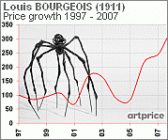
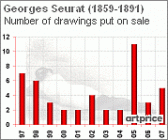
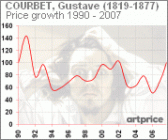
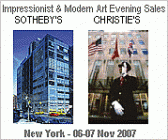
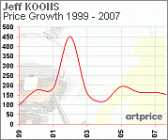

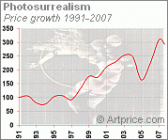
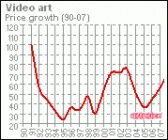
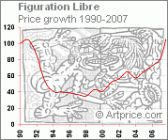
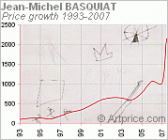
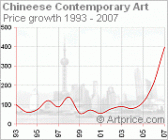
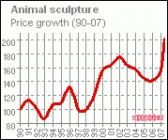
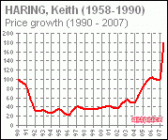


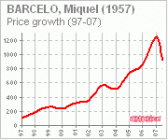
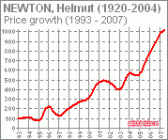
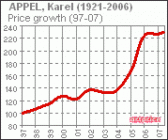
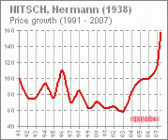
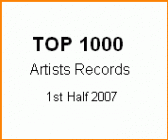
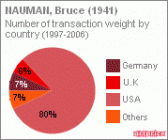
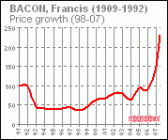

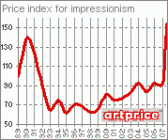
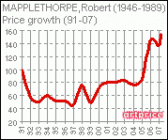
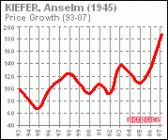

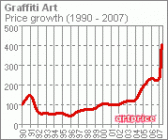
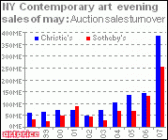
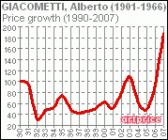








 0
0
